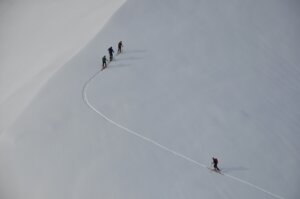Ski touring is an engaging activity characterized by two phases: ascending and descending a slope. Like snowshoeing, participants confront chilling and snowy conditions during intense physical exertion. Consequently, selecting appropriate clothing is crucial to ensure they are well-insulated, protected from the elements and comfortable during their high-intensity excursion.
Ski touring necessitates substantial effort, particularly during the ascent, resulting in your body generating warmth. Thus, adjusting the number of layers worn as the tour progresses and conditions change is important. The key here is breathability, hence the reason traditional alpine ski clothing with thermal lining is ill-advised for this purpose.
While considering what outfits to choose, ski touring accessories, jackets and pants should be considered essential items. It’s important to note that temperatures can fluctuate greatly during ski tours, shifting from sub-zero temperatures in the early mornings to hot and sun-doused afternoons on open glaciers. It is not uncommon for bouts of heavy snow, gusty winds, or even sudden rainfall. A prudent clothing system should be versatile, adaptable to these changes, lightweight, and durable. Such a system not only ensures protection from the elements and comfort throughout the tour but also prevents a burden of excess weight, aiding movement and effort during the activity.
Understanding the 3-Layer Dress Rule for Successful Ski Touring
Ski touring entails an engagement of two different types of physical efforts – the climb and the descent. The climb requires a steady energy supply and repetitive motion, resulting in much sweating. The descent, which is less energy-consuming, can lead to body cooling and requires readiness to handle more intense contact with the elements, including wind, rain, and snow.
Wearing three layers of clothes, ranging from the lightest to the most insulating, is suggested to tackle this peculiar dichotomy. This layering system helps regulate body heat, ultimately guaranteeing a comfortable ski touring experience.
Picturing oneself overdressed in a heavy suit under the blazing sun during the uphill trek is equally as uncomfortable as being underdressed while hurtling down a slope amidst a snowstorm. Hence, it’s critical to get one’s ski touring attire right.
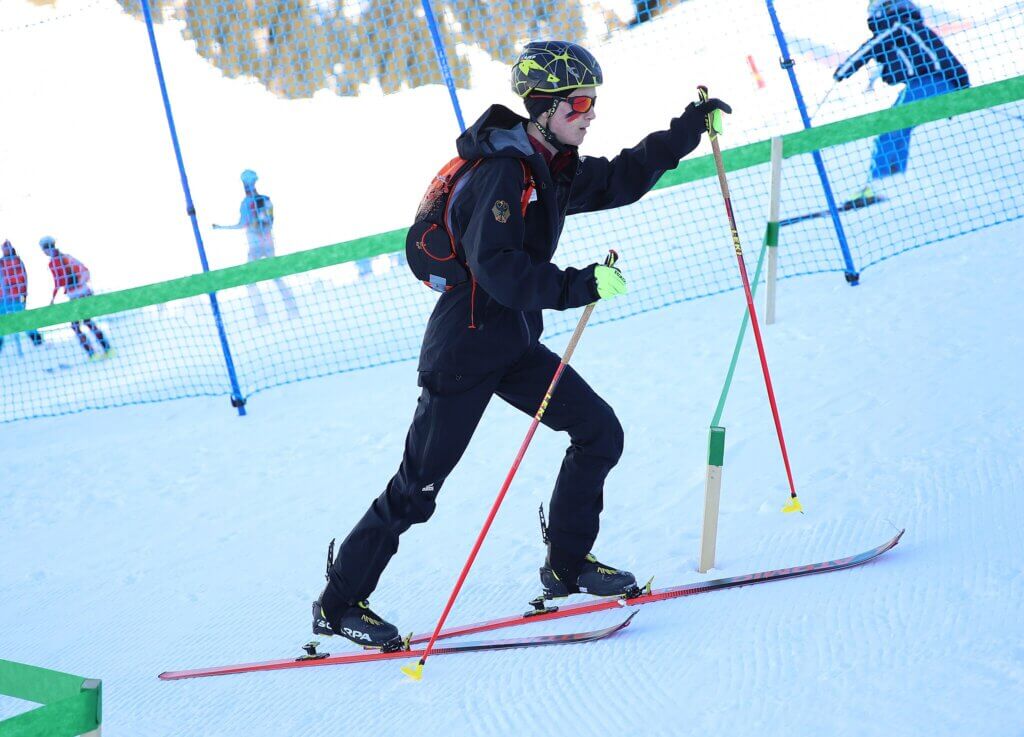
The first layer, worn directly on the skin, should consist of technical underwear made of synthetic fibres, with or without compression or wool. It is key to note that cotton should be strictly avoided.
The second layer can consist of natural or synthetic down or fleece, depending on individual sensitivity to cold. However, cotton still remains off-limits for this layer. This layer should be compact so it can be easily stowed away in a backpack when it feels too warm.
The third and final layer should entail a ski touring jacket. Ideally, it should be water-resistant and breathable (laminated in 2 or 3 layers) without an integrated thermal lining. It should act as a shield against snow, rain, and wind, amplifying the thermal capacity of the first two layers, thus keeping you warm.

If one has experience with resort skiing and already owns insulated ski jackets and trousers, they might suffice for off-piste skiing and occasional mid-winter day tours. Most existing clothing should be suitable for mountaineers transitioning to ski touring, except maybe for needing ski-tour-specific softshell trousers.
Finally, avoid choosing clothing based on resort skiing requirements. Ski touring generates considerable heat and can become incredibly warm, especially during spring afternoons. Therefore, resist the urge to over-layer. Over time, heavy clothing and unnecessary extras add to the weight that needs to be lugged around, reducing one’s enjoyment of the ski tour. Strive for lighter, essential gear and avoid heavier fabrics and accessories, tailoring one’s ski touring wardrobe for utmost comfort and performance.
What to Wear as Base Layer for Ski Touring: Breathable Technical Underwear
Despite popular belief, cotton should be entirely excluded from sports-related activities. Cotton, a fabric known for retaining moisture, often results in sweat buildup under thermal layers during physical exertion. Therefore, using breathable synthetic or merino wool undergarments is advisable.
Synthetic undergarments provide a breathable, non-itchy solution for ski touring. These undergarments work with the upper layers to channel perspiration away from your skin. X-Bionic products are an exception to this general category, which include breathable channels in areas most prone to sweat, thereby effectively regulating heat and effort. Synthetic fabric also offers the added benefit of muscle support for better recovery post-activity.
Undergarments made from merino wool are distinguished by their antibacterial and odour-resistant properties. Depending on the fabric’s weight, it can provide varying degrees of warmth while remaining breathable.
The primary function of the first layer is to facilitate moisture transfer from the skin to the other layers, keeping the wearer dry. Protection is essential, but breathability is paramount. To fulfil this role, one can choose synthetic fabrics specifically designed for sport, considering the potential for odour build-up, or opt for natural materials like thermoregulating and odour-resisting merino wool.
If the cold is extreme, the sleeve length and the need for an additional first layer should also be considered, ensuring optimal comfort based on the forecasted temperatures. In all scenarios, a cotton t-shirt is strongly discouraged due to its limited moisture-wicking ability, potentially resulting in significant discomfort.
What to Wear as Second Layer for Ski Touring: Key Fabrics and Tips
For heat retention during ski touring, it is essential to have a second layer of clothing, akin to a thermal padded jacket, which is an effective barrier against the cold. This insulating layer is a must as it is designed to retain the warmth around your body, ensuring that comfort and cosiness persist regardless of the external temperature.
While a light, breathable micro-fleece might serve some folks, others might find a Merino wool fleece jacket, known for its thermal regulation and warmth, better suited to their needs. The ideal body temperature during ski touring is where you find yourself neither overheated nor chilled, whether in motion or at rest.
As such, the second layer of clothing you choose for ski touring should be breathable. A fleece is common attire for many, but it’s crucial for ski touring that it is breathable to reduce sweat and is also not too bulky to fit into your backpack during the ascent.
Options for insulation include natural or synthetic down, both of which are highly compressible in your bag and can be combined with fleece for added warmth in extreme colds. Synthetic down is more breathable and easier to maintain, while natural down provides exceptional warmth.
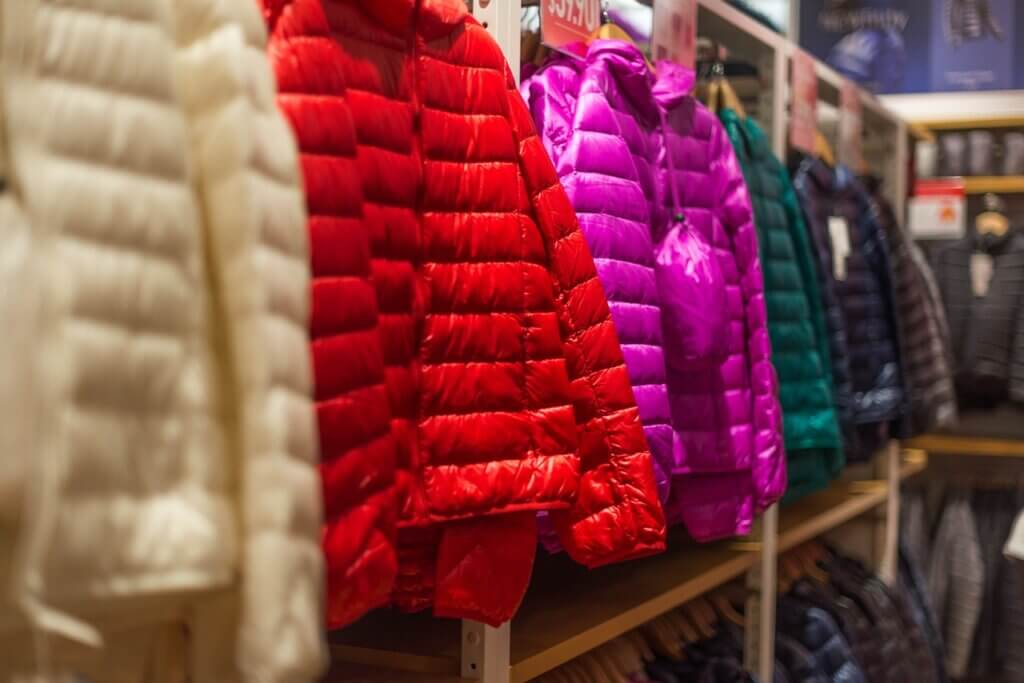
Other alternatives include a softshell jacket. This garment shields you from the cold and offers wind resistance and water repellency. It is well-suited for ski touring on fair weather days. A softshell jacket can also serve as the last layer for non-snowy conditions.
It is possible to layer these options for additional warmth if the situation demands.
Choosing the ideal ski touring attire may be challenging for those with less experience. Therefore, it is highly recommended to experiment and find what best suits you and under what conditions.
A helpful tip is to set off while feeling slightly cold, as body heat can rapidly increase during ski touring. The chances are that you might have to stop shortly to adjust your clothing accordingly.
What to Wear as Protective Outer Layer for Ski Touring
When gearing up for ski touring, clothing choice plays a substantial role in comfort and protection against weather conditions. A common choice for protective jackets is those of Gore-Tex, Dermizax, or Futurelight types. These jackets do not primarily provide warmth but act as a shield against rain, snow, and wind obstruction. Much like car bodywork or a protective shell, these jackets retain the heat furnished by the second layer of clothing, thus proving beneficial for grey or windy days, providing comfort during the ascent and descent.
Furthermore, the 3-layered jacket (3L, as in “three layers”) is ubiquitous, possessing a breathable and waterproof membrane sandwiched between an external fabric and an internal layer. Two-layered (2L: external fabric + membrane) and 2.5-layered constructions (2.5L: external fabric + membrane + internal protection mesh) also exist.
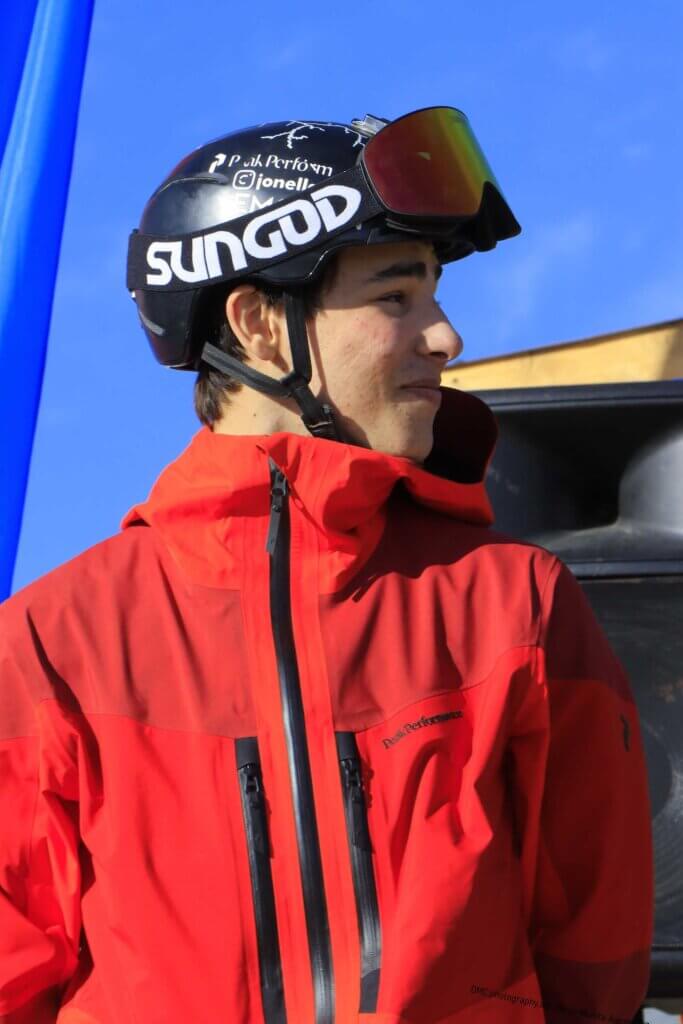
Attention to minute details can often make all the difference in your protective jacket selection. Such elements include easily operable ventilation zips to release excess heat and prevent the necessity of pausing to remove the jacket, reinforcement on shoulders to carry your ski touring bag without damaging the jacket, a protective hood that is sufficiently large to fit over your ski touring helmet, and spacious pockets on the front for the easy storage of energising bars or gloves. These pockets must be positioned high on the jackets for accessibility, even when wearing a bag or harness.
On sunny days, a soft-shell jacket can also be used. Known for its wind-resistant quality, it offers protection from the cold. Markedly, the third layer of clothing fends off external elements such as snow, rain, and wind, keeping the inner layers dry. It should ideally be both waterproof and breathable.
This final layer of clothing is essentially your secondary protective skin – it is the one that shields you from harsh weather conditions. A waterproof jacket is a necessity, but not any type will suffice. Opting for technical jackets matching the predicted weather on your ski touring itinerary is highly recommended. While a soft-shell jacket is suitable for relatively pleasant weather due to its breathable and flexible qualities, it is weaker in waterproofing than a Gore-Tex jacket.
Therefore, choose a Gore-Tex jacket for effective protection if you anticipate rainy, snowy, or particularly windy weather. While it is slightly more rigid than a Softshell jacket, the technology of Gore-Tex is highly insulating and maintains body warmth whilst ensuring protection from moisture.
With this knowledge of the three-layer rule and attention to minor details, the path to choosing the most suitable ski touring outfit is clarified. This gear can equip you to conquer the peaks while enjoying the journey.
Choosing the Ideal Ski Touring Trousers: Softshell vs Hardshell
When choosing what to wear for ski touring, the goal is to avoid overheating early in your outing. Unlike the upper body, one typically avoids multiple layers for ski-touring trousers. Utilizing thermal undergarments should only be considered under extreme conditions. So, if one layer is the norm, which should be chosen? This is a common question among outdoor enthusiasts preparing for a ski touring trip. Selecting the appropriate gear can significantly impact this sport’s comfort and overall experience. Doctors and fitness experts concur that, for the lower body, one solid layer of high-quality material ski trousers is sufficient in most conditions.
The science of clothing protection in rugged and frosty climates alludes to the idea that the best pant layer features both insulation and weather-proof properties to safeguard the skier from the bitter cold, snow, and wind, all while maintaining a balanced body temperature, preventing overheating, and allowing for flexibility and unrestricted movement.
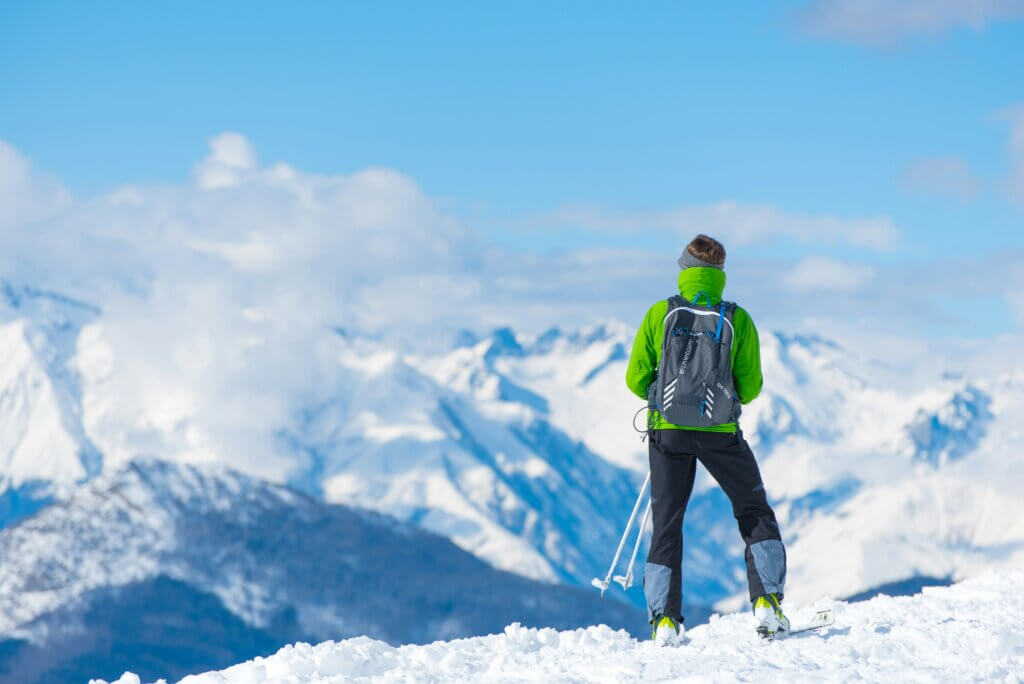
Optimising Your Ski Touring Experience with Softshell Trousers
Softshell trousers are the ideal choice for ski touring. Their flexibility and lightweight design ensure an exceptional level of movement freedom. They also provide excellent breathability and reliable wind protection. Another advantage of these trousers is their affordability, making them a more economical choice than those with membranes. They deliver warmth and a water-repellent, wind-cutting effect, making them a perfect pair to wear in any season without needing to pair them with thermal tights.
These non-waterproof trousers are only recommended for those outings which do not involve any risk of rain or wet snow. They can also be used for mountain outings, such as snowshoeing, trekking, and Nordic skiing.
When choosing softshell trousers for ski touring, it’s essential to consider several specific features. The lower leg of the trousers should offer enough width to comfortably accommodate ski boots even when the buckles are loosened for skinning. The design of mountaineering softshell trousers, with a significantly narrower leg to prevent crampon snagging, seldom fits over ski boots.
Favourable features to look for include instep patches, venting zips, and ample pockets. Weight is another important consideration; opt for trousers weighing between 450 and 650 grams. Heavier models may cause overheating during warmer days.
Colour selection also plays a role. Black trousers may attract and absorb more heat, potentially making them uncomfortable, so choosing a different colour might be beneficial.
Above all, trying on the trousers before purchase is crucial. This allows for verification of length, fit, and volume appropriateness and ascertaining how they accommodate ski boots. However, finding ski touring pants in stock in the UK may be a challenge, requiring either a significant journey or purchasing a pair at a resort to try on.
Selecting the Perfect Hardshell Trousers for Ski Touring
Ski touring calls for bespoke gear, especially trousers. These three-layer trousers are built with an integrated membrane, offering superior protection against external factors like moisture, wind, and possible falls while descending. A downside to these trousers might be their lower breathability. But this has been typically offset by the inclusion of ventilation openings. These trousers are unlined, and they can be complemented with thermal underwear for chillier days.
Due to their considerable features, these ski touring trousers could also be favourable for alpine ski outings. Among them are ventilation zips, which are critical since the trousers are your single layer, unlike the upper body clothing. These zips are vital during a climb, as removing the trousers is not an option. Moreover, they have performed knees that ensure a great range of motion and can be incredibly beneficial during tough alpine passages.
Incorporated gaiters and bellows perfectly adjust your trousers to typically narrower touring ski boots compared to alpine ones. This feature guarantees that snow and wind are kept out. Another thoughtful design element is the added reinforcement at the lower legs to guard your trousers against potential damage from ski edges or crampons.
As for overtrousers designed for ski touring, consider their features too. It is essential that they possess long side zips for ventilation and for slipping them on over your ski boots. They should also have sufficient ankle width to fit over your ski boots when the side zips are closed. Don’t overlook the instep patches, as these protect sharp ski edges. Lastly, an ideal overtrouser shouldn’t be overly hefty; a weight between 400-600g is a good benchmark. Excellent gear selection truly makes a difference in ski touring.
Essential Gear to Protect Your Extremities While Ski Touring
Essential Head Protection Advice for Ski Touring
Ski touring requires physical agility and the right attire to ensure safety. Head protection is crucial, and ski touring enthusiasts should wear a helmet designed for this activity. These helmets are typically lighter and more breathable than regular alpine ski helmets, making them ideal for the rigours of the mountain terrain.
In addition to a helmet, a hat or beanie and a neck or face mask should also be part of the attire. These extra layers will provide essential protection against the cold and wind that are staples of mountainous environments. One innovative garment that has found its way into the kit of many backcountry enthusiasts is the neck gaiter, colloquially known as a ‘buff’. These simple tubes of fabric are worn around the neck, providing a versatile shield against the elements that can also serve as a headband or a nose cover.
Eye protection is another key factor and should not be ignored. Sunglasses are advised for the ascent and summit stages where light exposure might be higher, especially with polarizing lenses that enhance contrast, making them beneficial in slightly hazy conditions. For the descent, a resilient, protective ski goggle should be worn. These offer better coverage and stay securely fastened, reducing the risk of losing them during a fall.
Helmet considerations extend to the competition and backcountry sphere. Racing standards require ‘dual-certified’ helmets that meet International Ski Mountaineering Federation (ISMF) specifications for both climbing and skiing. For backcountry use, some skiers prefer to wear ultra-lightweight climbing helmets. These versatile pieces can be strapped to a pack during approaches and worn during ascents and descents. However, concerns have been raised about their effectiveness in protecting from serious falls or impacts. As such, the final call will depend on individual perceptions and priorities. Nevertheless, regardless of the skiing mission, any head protective gear is better than none. Practitioners should choose equipment they will likely bring along instead of gear that would eventually be left unused.
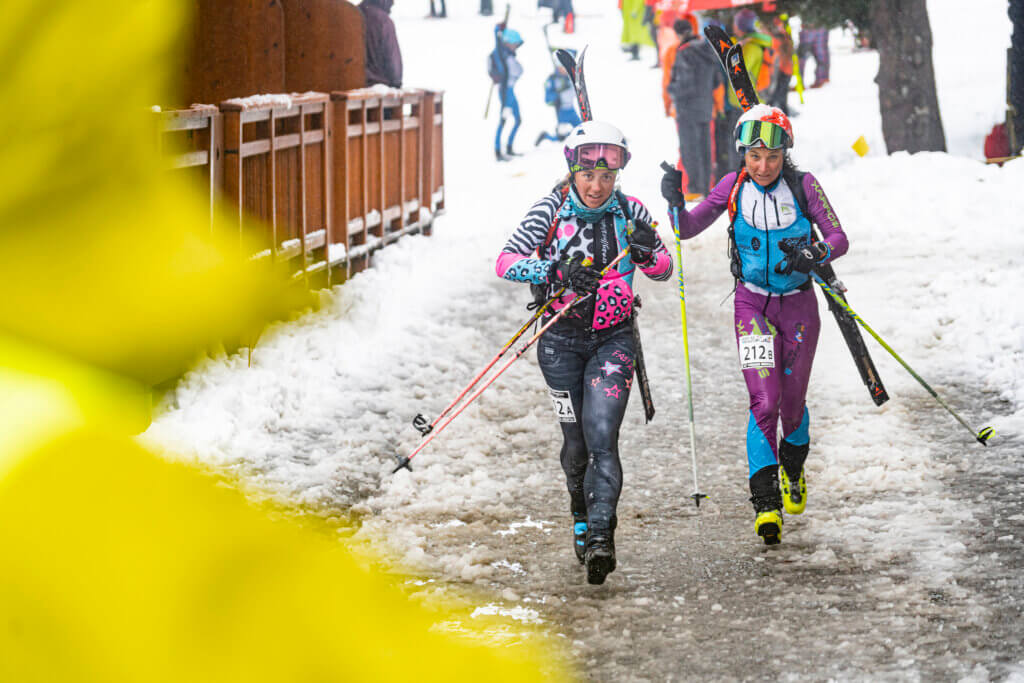
Choosing the Right Ski Touring Gloves for Ascent and Descent
During the ascent phase of ski touring, you must equip yourself with flexible and breathable gloves. These gloves are crucial in ensuring a good grip on your ski poles and carrying out certain operations, such as handling skins. Softshell gloves are an excellent choice for this phase due to their breathability and adaptability for precise tasks. Adding a pair of liner gloves to your kit can provide extra warmth for those prone to feeling the cold.
In contrast, changing into warmer, more protective gloves or mittens for the descent phase is advisable. Mittens can also be worn over your ascent gloves, offering an extra layer of protection. These gloves or mittens are usually warmer and more robust, capable of withstanding the harsher conditions experienced during this part of the tour. So remember, having two sets of gloves, one for ascending and the other for descending, is instrumental in enjoying a safe and comfortable ski touring venture.
Essential Footwear Tips for Ski Touring
When dressing for ski touring, it is crucial to wear appropriate attire adequately engineered to optimize heat regulation, protection from the cold, and insulation, especially at the extremities. This safeguards against extreme weather conditions or natural elements frequently encountered on a tour.
A significant aspect of the gear includes suitable ski socks crafted from wool. They play a dual role in keeping your feet comfortably warm and providing protection from toes to knees. In contrast to common belief, thick socks do not enhance warmth in ski boots. Increasingly thick socks can exert more pressure and hinder circulation, making your feet colder. Hence, instead of thick socks, make a beeline for thinner ones and let the ample insulation of your ski boot liner maintain the warmth. Individuals with persistent cold feet can rely on experienced boot fitters to tailor their boots. Some heated footbeds and socks ensure you do not lose sensation in your toes due to the cold. As a precautionary measure, an extra pair of socks in your ski touring pack can prove invaluable, enabling a swift change into a clean, dry pair when required.
For those whose hiking trousers are not equipped with gaiters, it would be advisable to invest in them. Gaiters function to prevent snow or rain from entering your boots and wetting your feet. This prevents discomfort and possible health issues, such as trench foot, from prolonged exposure to a cold, wet environment. Investing in a quality pair of gaiters will provide added warmth and protection and enhance the overall ski touring experience.
Choosing Between Ski Goggles and Sunglasses for Ski Touring
Ski touring entails being properly equipped to safely enjoy the ascent and descent of the powdery slopes. An essential part of this gear is appropriate eye protection, with sunglasses and goggles proving invaluable.
During the uphill trek, sunglasses are perfectly suited. Built for ideal ventilation, they offer protection from the sun’s harmful rays, thus ensuring a safe and enjoyable ascent. The sunglasses shield the eyes from the bright, often reflected sun rays and make climbing more comfortable.
However, upon commencement of the thrilling downhill journey, it’s recommended to switch to goggles. Sorry sunglasses, while great for the climb, the goggles have been precisely built for the descent. Offering superior protection, these snow spectacles stand a better chance of staying put during a tumble and won’t be easily lost in the snow. Besides, their resilience makes them a better choice for unanticipated falls, equipping skiers with the security needed for the adventurous descent.
Hence, while undertaking a ski touring adventure, including both sunglasses for the ascent and goggles for the descent in one’s gear can ensure a safer and more comfortable journey.
Choosing the Ideal Ski Touring Backpack: Features and Considerations
In ski touring, the backpack you choose to wear can significantly impact your experience. While any hiking backpack might suffice, a ski touring backpack is specially designed for the activity and is more suitable for the task at hand. These backpacks are typically constructed from a fabric that is more resistant to wear and tear caused by skis’ edges. They also feature a snow-shedding back panel and side and/or diagonal ski carriers.
Certain models, such as the robust Osprey Kamber or the ultra-lightweight and advanced Ortovox Ravine, are equipped with special compartments to store shovels and probes separately. This adds convenience as your shovel will not swing around with every movement, and your probe is easily accessible when needed.
For a day trip, a backpack with a capacity of 20 to 30 litres should be sufficient to carry all the necessary items. Choosing a backpack with a capacity exceeding 30 litres is advisable for multi-day trips.
Investing in a backpack equipped with an airbag system can benefit those with a higher budget and those venturing into riskier terrains. Once triggered, the airbag acts as a buoy, keeping the body on the avalanche’s surface.
Ski-touring backpacks often have specific external attachment systems for items such as helmets, ice axes, or crampons to enhance functionality.
In summary, ski touring necessitates a number of special equipment to ensure both a safe ascent and descent. A thoughtfully designed and packed ski touring backpack is essential to this setup.
The Essential Safety Kit for Ski Touring: DVA, Probe and Shovel
Ski touring requires a specific set of attire and equipment not only for performance and comfort but also – crucially – for safety. Getting help immediately after an accident on the slope can be challenging, given that a rescue helicopter typically takes between 20 to 30 minutes to arrive. Considering that a victim’s survival rate decreases by 80% after 15 minutes due to asphyxiation and hypothermia, it’s clear that skiers are essentially their own first responders.
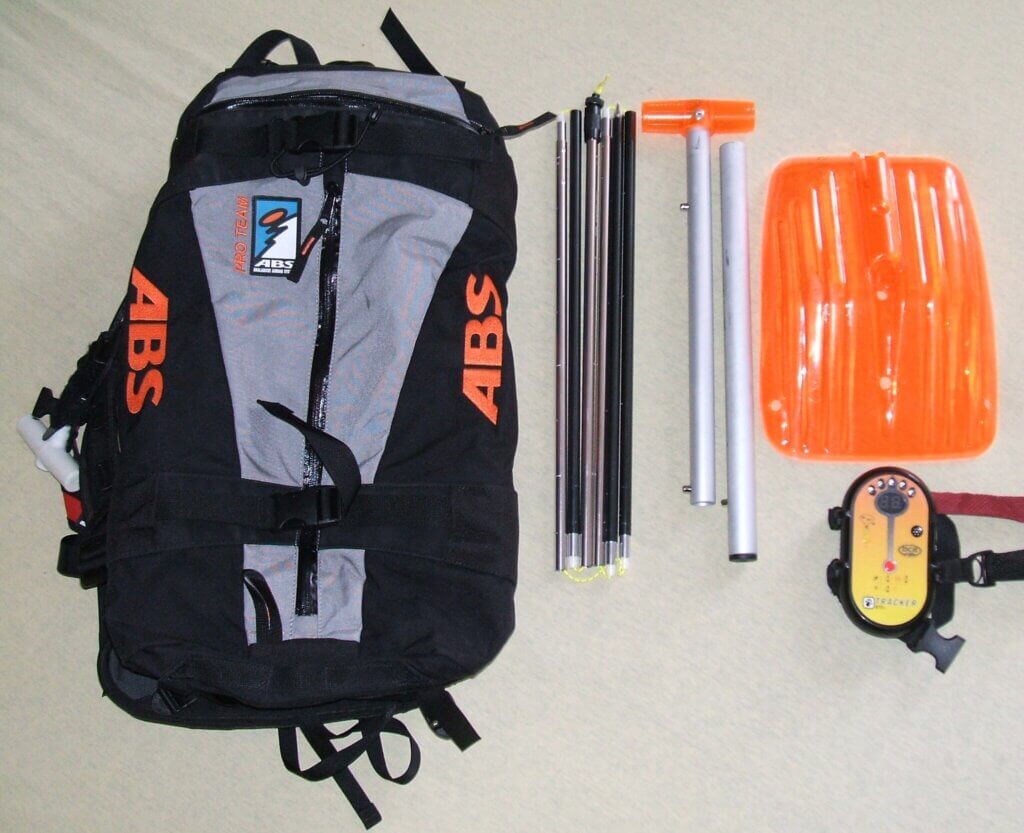
All skiers must carry a pivotal trio of tools: the avalanche victim detector, shovel, and probe. These tools could make the difference between life and death, either for helping another person or for your own survival. The market offers standard kits with these tools at affordable prices. However, each piece of equipment can also be specifically chosen according to individual requirements and characteristics for those desiring a bespoke fit for their gear. The seriousness of the potential situations that may arise necessitates an explicit focus on the appropriateness and reliability of the equipment chosen by each skier.
Choosing and Using an Avalanche Victim Detector for Ski Touring
An essential ski touring gear is an Avalanche Victim Detector. This vital tool sends and receives signals to help locate individuals buried under the snow. When in search mode, the dial provides distance and direction information; the search is usually concluded in a cross pattern. It is recommended for skiers to invest in a device they are already familiar with, as knowing how to use it could save lives (possibly even their own!). Whilst the cost may be substantial, it is crucial to remember that these devices are life-saving equipment.
When choosing a device, there are several factors to consider. Opting for a new and digital model is advised as they are more effective than older, analogue ones. Regular practice following the guidelines provided by the ANENA (National Association for the Study of Snow and Avalanches) is essential for a smooth and quick operation in case of emergencies. For consistent functionality, especially in cold weather, it’s suggested that batteries are replaced when they reach 80% capacity. Arva, Ortovox, and Mammut stand out among the well-known Avalanche Victim Detector brands.
Choosing and Using a Probe in Ski Touring Rescue Operations
When embarking on a ski touring adventure, it’s crucial to be clothed in appropriate gear, including items often associated with safety rather than style. One such key element in your skiing attire would be the telescopic probe, which is integral for locating avalanche victims. After roughly locating the victim using the Avalanche Victim Detector, this telescopic probe aids in pinpointing their exact location. In practical terms, the area is probed in a spiral pattern resembling that of a snail.
Selecting a suitable probe requires care. A minimum length of 240 cm is recommended to cover a wide radius efficiently. Equally important is an easily operable yet efficient locking system that facilitates swift assembly. This is particularly vital in emergency scenarios where every second counts.
Moreover, an often-overlooked tip to remember while using the probe is to keep your gloves on. This preserves the field’s natural scents and avoids giving misleading olfactory cues to the rescue dogs, whose role is paramount in such situations. Though seemingly trivial, this advice can mean the difference between life and death in a rescue operation. Thus, ski touring attire goes beyond just weatherproof jackets and insulated boots – it includes safety-first essentials like the telescopic probe.
Choosing the Right Snow Shovel for Ski Touring
When embarking on a ski tour, it’s essential to consider the necessary equipment for potential snow emergencies. One such tool is the snow shovel, designed to remove snow and extract anyone trapped after an avalanche or snowfall. The effectiveness of a rescue greatly relies on the shovelling technique used. It is recommended to shovel horizontally to the body, allowing the victim to be delicately slid out rather than extracting them from above, which could lead to further injury.
Arranging in a ‘V’ shape can increase efficiency if multiple rescuers are present. It allows more people to participate in the rescue and ensures the snow is effectively cleared from a broader area.
Choosing the right shovel model is as crucial as the technique. Opting for a model with an aluminium scoop rather than plastic is recommended. While plastic may be lighter, it is less durable under intense conditions. Moreover, a shovel with an oval handle is easier to assemble in an emergency than a round one due to its convenient shape.
To Conclude, Personalising Your Ski Touring Wardrobe
Navigating the ideal clothing ensemble for ski touring can often be a personal and unique process, largely varying based on individuals’ adaptability to cold weather, physical exertion and personal preferences. Distinct responses to these elements imply an individualized system of garment selection advantageous for optimum comfort and thermal regulation during ski touring.
A user’s comfort system can range from minimal layering, where softshell trousers are worn sans a baselayer, to more elaborate combinations – possibly entailing long underwear paired with insulated ski pants. Similarly, some individuals may prefer layering up with two mid-layers, while others may find no necessity.
It is imperative to note the collaborative function of these clothing pieces. The effectiveness of a high-quality midlayer, for instance, could be compromised if worn over a sweat-soaked cotton t-shirt. This draws attention to the importance of choosing compatible pieces that augment each other’s performance rather than detract from it.
Sequencing the perfect garment assembly for ski touring may necessitate numerous trials across different tours. Despite the possible trial-and-error process, discovering a tailor-made system for ultimate comfort and safety is definitely achievable. As a concluding note, ski tourers are enjoined to prioritize personal welfare and comfort, ensuring they are practically dressed for the exhilarating adventure that awaits.

